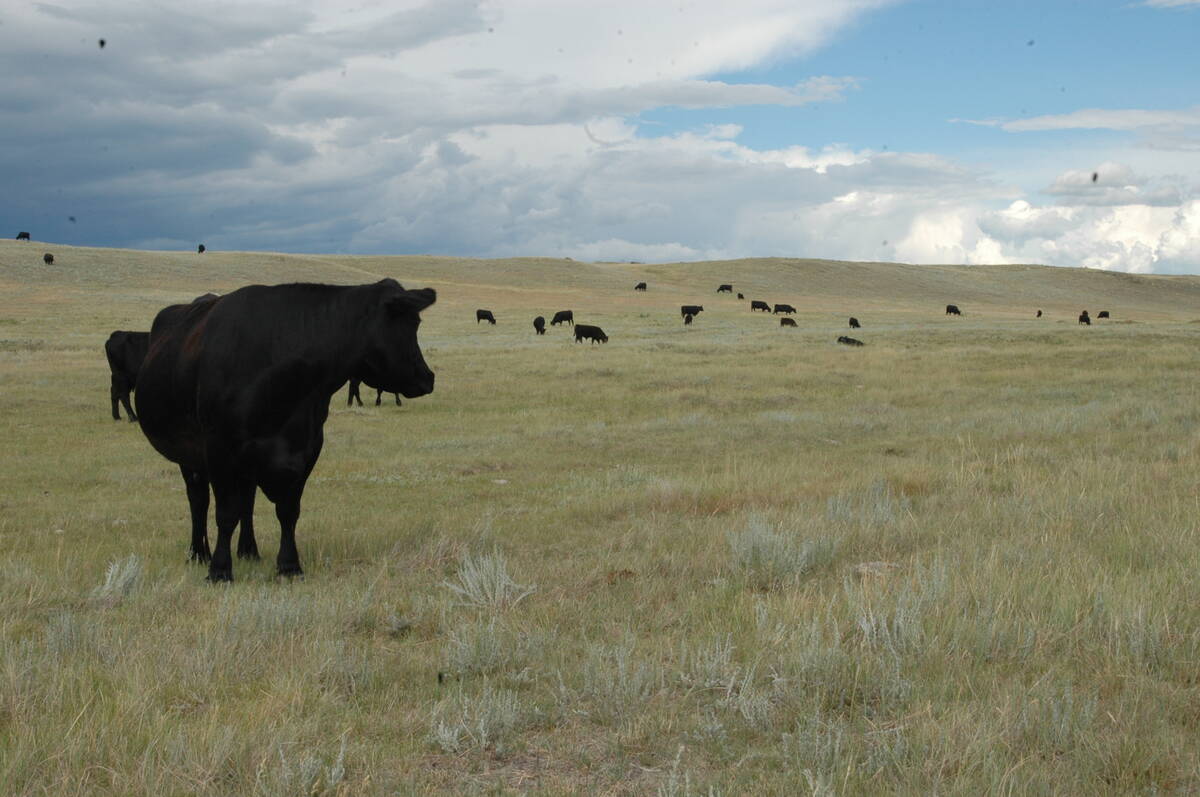Total inventories are down 1.9 percent compared to last year and almost 25 percent smaller than in 2005
Shrinkage of the Canadian beef breeding herd continued last year and domestic beef cow numbers are now at their lowest since 1990 at 3.56 million head.
Statistics Canada released the latest livestock numbers last week showing total cattle inventories were down 1.9 percent compared to last year. That percent equates to 220,000 head, pegging the total cattle inventory at 1.2 million head. It is a decline of slightly less than 25 percent from the high seen in 2005.
“The cow numbers shrunk a little bit more than we were expecting,” said Brian Perillat, manager and senior analyst with the Canadian Cattlemen’s Association Canfax service.
Read Also

Canadian Food Inspection Agency slammed for handling of bovine tuberculosis case
The federal government leans heavily on producers to “take one for the team” and risk their livelihoods without any reassurance of support.
Dry conditions early last year were the biggest reason for the decline as producers took steps to conserve feed and pasture by culling heavily and retaining fewer heifers for breeding.
“We sent a lot of cows to town early,” said Perillat.
Jason Wood, livestock market analyst with Alberta Agriculture, also tapped drought as the big factor.
“We’ve got this ongoing consolidation in the beef herd that’s not being helped by moisture conditions that are getting more and more variable. That affected our pasture and forage conditions last year,” Wood said.
“Profit margins are declining. Profit margins are still estimated to be positive but they have been declining over the last few years and that’s been also playing a role in these numbers.”
Statistics Canada reported that Alberta continues to have the largest cattle inventory among all provinces but it also had the largest decline in beef cattle numbers last year at 120,000 fewer animals.
However, Alberta has slightly more than 40 percent of all cattle in the country, followed by Saskatchewan at 19.6 percent and Ontario at 14.1 percent.
Saskatchewan and Manitoba each had a cattle herd decline of about 30,000 head last year, according to Wood. Ontario was the only province to see a gain last year, although it was slight.
The number of beef heifers retained for breeding last year was down 6.3 percent to 515,000 head as of Jan. 1. Feeder heifers were down 1.9 percent and steers were down 7.1 percent.
“While the calf crop has been declining, slaughter rates have been supported by reduced feeder cattle exports to the U.S. and growth in feeder imports,” Canfax reported.
“In addition, the proportion of fed cattle and cull cows processed in Canada has been increasing. The number of beef cows on Jan. 1, 2018, was basically even with the Jan. 1, 2016 cow inventory, but the Canadian fed slaughter was 10.5 percent higher in 2019 compared to 2017 as a result of more cattle staying or coming into Canada.”
Statistics Canada said slaughter declined during the second half of 2019, coinciding with a lower slaughter price.
“Total cattle slaughter decreased 0.4 percent to 1.8 million head over this period. However, this was the fourth consecutive annual increase for total slaughter.”
Wood also noted the U.S. cattle inventory was down last year after several years of expansion since 2014.
That could have been a bullish sign for North American markets, said Perillat, but concerns over coronavirus, or COVID-19, have caused general commodities selloffs and cattle have not been immune to that trend.
As well, massive amounts of meat are now available in North America so any hiccup in demand can have a significant effect on prices.
In the dairy sector, cow numbers were up slightly over the previous year at 981,300 head and are at their highest point since 2008, according to Canfax. StatsCan put the total number of dairy cattle across the country at 1.96 million as of Jan. 1, a figure that includes dairy heifers.
















